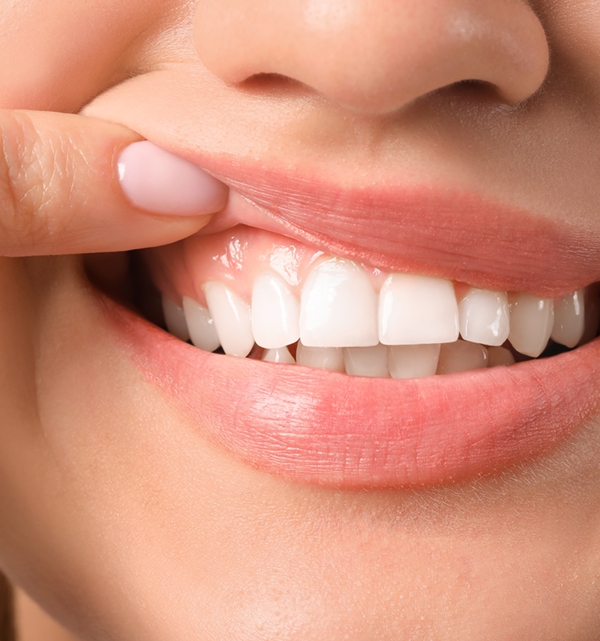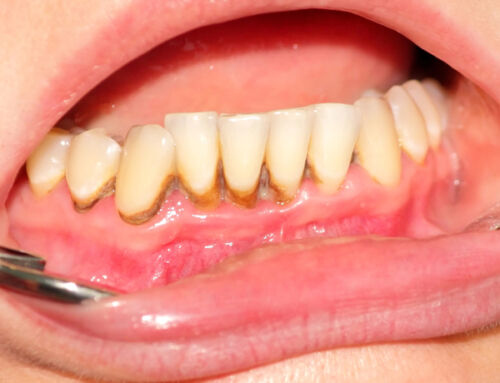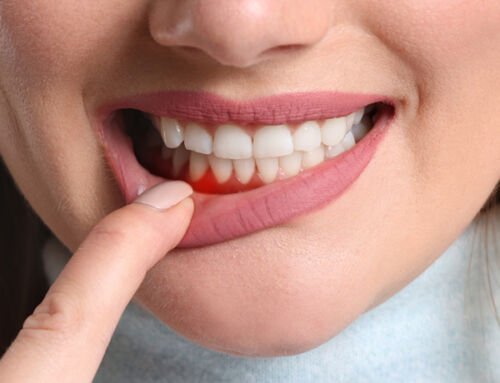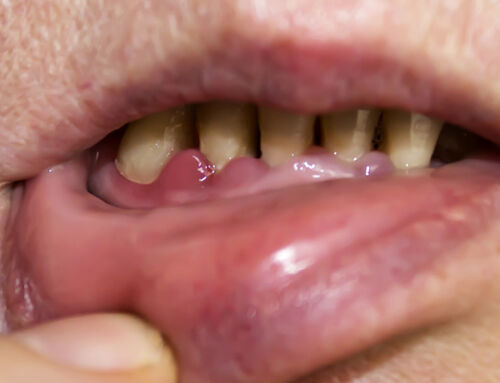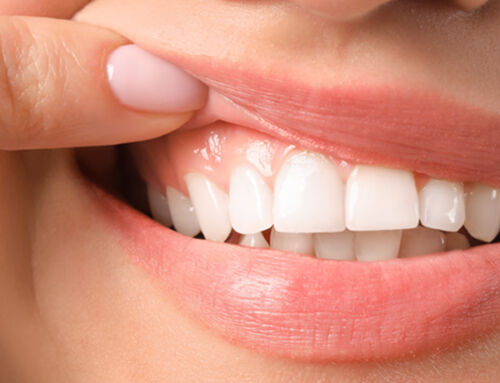Healthy gums are one of the signs of good oral health. At a glance, the gums should be pinkish, firm to the touch, and consistent throughout in colour and shape. They should wrap around the teeth snugly with the edges tapering in between two teeth. These characteristics provide a barrier against bacteria and help improve the appearance of the smile.
But if you notice your gums look as if they have pulled away from your teeth or if your teeth are looking longer than usual, then you may be experiencing receding gums. This occurs mainly due to plaque and irritants leading to gum or periodontal disease.
While receding gums are generally more of a cosmetic concern, they may be a symptom of underlying dental problems that may worsen if left untreated. Read along to learn more about gum recession and what our dentists at Chinook Dental can do to help restore the health of your gums.
Symptoms of Receding Gums
Gum and periodontal disease are the leading causes of receding gums. These mainly affect the bones surrounding the teeth and the attachments between the teeth and bone. Because of this, receded gums would expose more of the tooth, resulting in teeth that look longer. This is the most apparent sign of gum recession.
Other signs of gum recession include:
- Pain or discomfort on the gum line
- Sensitivity to hot or cold food and drinks
- Sensitivity during dental cleanings and restorations
- Sensitivity when brushing or flossing
- Loose teeth
- Bite changes
Causes of Receding Gums
One of the more common causes of receding gums is aging. Because we subject the teeth to daily wear and tear when brushing, chewing, and eating, the gums take a toll on this, causing them to pull away. So, you may find that people over the age of 65 have gum recession on one or more teeth.
Aside from this, gum recession may also occur due to:
- Aggressive toothbrushing
- Using a hard-bristled toothbrush
- Periodontal disease
- Trauma or injury to the gums
- Smoking or vaping
- Lip and tongue piercings
- Sharp dental restorations
- Ill-fitting dentures or dental appliances
Treatment for Receding Gums
Gum recession treatments can be divided into two parts — prevention and rehabilitation. Prevention is mainly to remove the cause of the disease and stop the problem from getting worse.
Meanwhile, rehabilitation is done to restore the gums to its original appearance. This involves challenging treatments because gums do not grow back. Instead, regenerative and graft materials are placed to help reshape the gums.
Let us go over your options for both treatments below:
Improved oral hygiene routine
Perhaps the easiest and most effective way to treat gum recession is to develop and maintain an efficient oral hygiene routine. This is a sustainable way to treat and prevent a majority of dental diseases in the long term.
Your oral hygiene routine should include:
- Brushing your teeth at least twice a day using a soft-bristled toothbrush
- Swishing an antibacterial mouthwash
- Flossing properly, gliding the floss down the gumline and against the sides of the tooth
- If necessary, cleaning dentures or other oral appliances thoroughly
Improving your lifestyle and habits also help reinforce your oral hygiene. Avoid tobacco smoking or vaping as this can affect gum health drastically. Also, maintain a healthy diet as this contributes to your overall health.
Professional dental cleaning
Plaque build-up is the number one cause of gingivitis. When plaque is left to thrive on tooth surfaces and underneath the gums, more of the symptoms of gingivitis will show and this includes receded gums. This is where professional teeth cleaning can help.
Using an ultrasonic scaler, your dentist will clean all areas of the tooth, including those that are not reached by your toothbrush such as under the gum line. It also removes surface stains for a whiter smile. Professional dental cleaning should be done twice a year to prevent severe plaque accumulation that can lead to gum and periodontal disease.
Dental scaling and root planing
If you have severe plaque deposit build-up, deep scaling and root planing can help restore the teeth and bone to health. This treatment involves sharp curettes and scalers that scrape off diseased tooth structures. It also smoothens the root surface to allow healthy bone and tooth attachment.
Scaling and root planing removes possible sources of infection and sets you up for long-term, better oral health.
Guided tissue regeneration
Severe periodontal disease affects the teeth, bones, and gums. Because of bacteria, the bone deteriorates, leaving the tooth unsupported. Eventually, this will cause the teeth to loosen. To help bone recover and save the tooth, periodontists recommend guided tissue regeneration.
Guided tissue regeneration (GTR) is a modern method for periodontal repair. It is done after completing periodontal therapy and when all irritants are removed. Once periodontal health is restored, the next step is to stimulate the growth of bone using regenerative membranes packed where there is decreased bone support. This helps increase the density and height of the bone, stabilizing the teeth and gums.
Soft tissue grafting
Even when optimal gum and periodontal health are restored, your receded gums will not grow back to look normal. So, the main treatment to cover exposed tooth roots, re-establish the shape and contour of your gums, and enhance your smile is through soft tissue grafting.
In this procedure, a flap of soft tissue is recovered from the roof of the mouth or other viable tissue sources. Then, this is placed where gum coverage is needed and sewn to stabilize. Once properly healed, your gums should look good as new.
Take Care of Your Gums with Chinook Dental
Chinook Dental emphasizes the importance of keeping the gums healthy as part of your complete oral health check. The gums are an integral part of the mouth that provides protection against bacteria-causing infection. So, keeping them in good shape is one of the many ways to avoid dental diseases.
Learn about our comprehensive preventive dentistry programs targeted to maintain your oral health. Call today to schedule your appointment!

